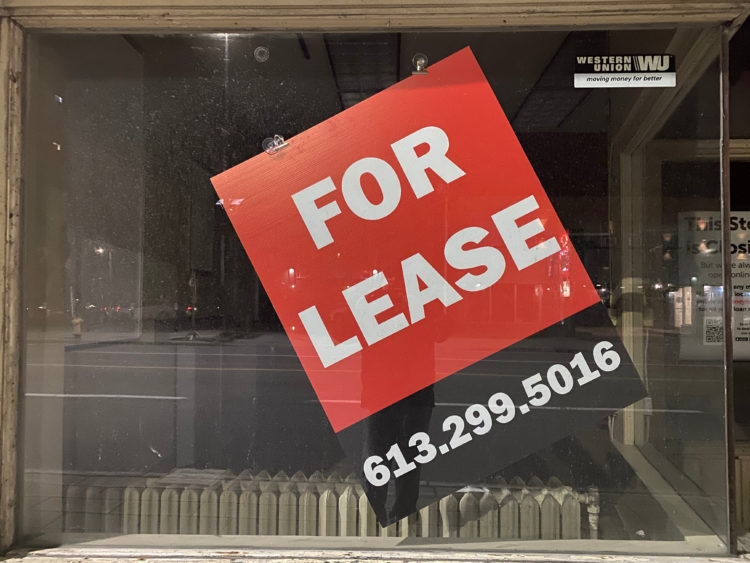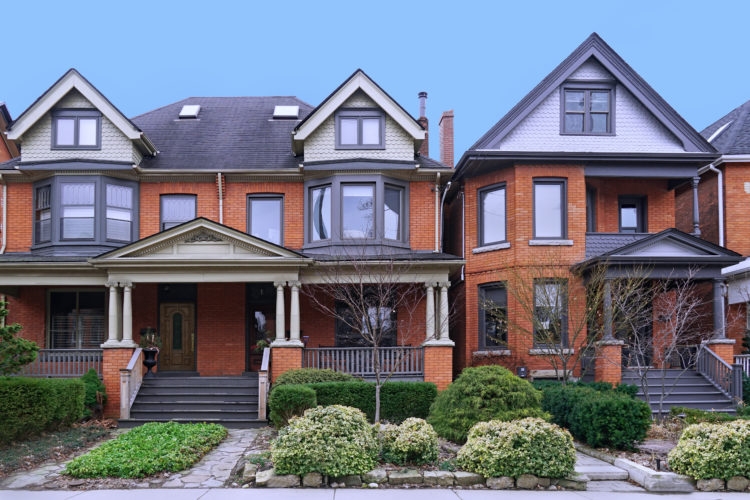
As land and real estate markets are central to the functioning of urban areas, it is important to understand what happened to the urban property markets during the pandemic. This will be key to appreciating how real estate markets react post-COVID.
If COVID induces a permanent change in demand for the type or location of land uses, can the supply respond accordingly?
It is useful to address the topic from three perspectives. First, what were the expectations about the impact on real estate markets when the pandemic was first recognized? Second, what have been the actual effects on these markets to date? Finally, what can we expect the future to hold as we return to some normalcy in our day-to-day lives?
What we did see was a disruption in the early days of the pandemic, as uncertainty about employment and changes in normal work routines were common. However, government interventions provided short- and long-term solutions, and life returned to some normalcy. Now, as we begin to reconstruct the economy post-pandemic, it is clear that the real estate market has shifted.
Early expectations
As the pandemic ramped up globally and arrived in Canada in early 2020, there was a great deal of concern. Uncertainty prevailed as to its severity, how long it would last, and how many separate waves might result. Since expectations regarding prices and rents heavily influence many property market decisions, this resulted in significant concerns.
People were worried about being able to pay residential, retail and office rents. Homeowners were concerned about making their mortgage payments and what this would do to the housing market, including the potential effect on market prices. These fears were linked to the forecasted job losses resulting from retail and service operators like restaurants being forced to scale back their operations or to close as the pandemic worsened.
As a result of concerns that job losses would lead to many people being unable to pay their rent or to meet their mortgage obligations, governments took several preventative measures. They put a moratorium on evictions for the non-payment of rent and arranged for lenders to defer monthly mortgage payments.
While there were significant job losses in both the retail and restaurant sector, this was not the case for the office employment sector, where the main impact was the change of employment location. Employees in many office-related jobs were encouraged to work from home.
However, there has been concern on the part of the owners of office buildings that despite term multi-year leases, companies may not require as much office space post-pandemic. Given the possibility that more employees might work from home as industries settle into the new normal, building owners feared that these leases might not be renewed. Countering a drop in at-office employment has been the possibility that more space per worker might be required to maintain physical distancing.
The uncertainty in both the residential and office markets led to predictions of weak sales and low occupancy in most property markets. For example, government restrictions meant that agents in the resale residential market couldn’t hold open houses. As a result of many of these concerns, in May 2020, the Canada Mortgage and Housing Corporation predicted that the housing market would face a severe setback in 2020, including a sizable drop in average prices.
Fears for the future were less evident in the industrial space market, where expectations of more use of online shopping would translate into a greater demand from warehousing and distribution companies.
What has happened?
Given that we now can see the “light at the end of the tunnel” for the pandemic due to the ramping up of vaccination programs, we can now look back and assess how property markets have performed over the past 14 months.
The stellar performer has been the owner-occupied residential market. Despite sluggishness in the early months, the market has boomed in most areas, with resale markets often characterized by multiple offers and bidding wars. The ownership market for ground-related units, has surged, with some analysts arguing that the strong sales have led to a “housing bubble.”
The condo apartment market, despite being weak in the early part of the pandemic, has bounced back, especially in new projects. The April numbers for the Toronto region show the highest number of new condos sold in one month since 2000 – 69 per cent above the 10-year average. The rapid increase in the price of ground-related homes likely shifted some buyers to more affordable condo apartment units.
In Toronto, there was some reduction in rents during the downtown, but those have begun to increase once again as more students and young people come back to take advantage of the current attractive rents.

The demand for ground-related homes in contrast, especially single-detached houses, has been led by those millennials who maintained their jobs and are seeking more space for home offices. Statistics Canada reports that 40 per cent of workers shifted to working from home as a result of the pandemic. Many of these buyers do not expect to be working in the company office five days a week in the future. Thus, there has been great demand for ground-related homes, which are more easily attainable in suburban/rural and/or second-tier cities. Data show that the increased demand for single-family detached homes led to greater price increases in suburban areas not only in Toronto, but also in Vancouver, Montreal, Ottawa and potentially other urban regions.
It is important to recognize that the movement of millennials outside Toronto began prior to the pandemic. The pandemic only reinforced this trend. Recent U.S. data analyzed by Brookings show U.S. cities’ growth rates have also slowed relative to suburban rates during the pandemic.
Household savings increased for some, especially in the early days of the pandemic, as people were not spending money on trips and other purchases. This allowed them to accumulate additional funds for a down payment.
In the commercial retail and service space, there have been closings and bankruptcies for many smaller retailers and operators of services such as in the food industry, despite federal and provincial financial supports. In contrast, big-box stores have reported sizable increases in sales. However, the GTA commercial retail market has performed well in the first quarter of this year, with the exception of the office sector, which has shown an 18 per cent decrease in investment.
The industrial market has been extremely strong throughout the pandemic, with vacancy rates near nil and escalating rents and property values. The rapid growth in online shopping is a major contributor.

The future: questions and issues
There are questions regarding how property markets will respond to the new realities of post-pandemic life. For the commercial sector, especially that part focused on small retail and food service buildings and space, the question remains as to how long it will take for new users to emerge for these units. This may likely depend on the strength of the neighbourhood retail sub-markets where the greatest vacancies have occurred.
The future of both commercial office space markets and the continued strength of the ground-related residential market are tied to these linked questions: Will people be returning en masse to work in the office? Will employers allow a more-permanent work-from-home model? Or will a hybrid model emerge? If so, how many days per week will working from home be permitted? Will workers favour this option? Are downtown office users likely to establish satellite offices in the suburbs so employees do not have to commute downtown?
Recent evidence by Statistics Canada indicates that 90 per cent of “at home” workers feel that they have been at least as productive as being in the office, and that post-pandemic 80 per cent would like to work at home for half of the work week.
It appears that many office employers are open to the hybrid model. The receptiveness to this may vary, but overall it may lead to a reduction in the total office space required.
Given the commitment that many homeowners have made to buying more space in locations distant from downtown Toronto, they appear to have an expectation of being able to work from home at least part of the week post-pandemic. With fewer workers coming to the office, the demand for office space will be reduced, even with the demand for more space per worker because of physical distancing.
In the Toronto region, as ground-related housing prices have surged in recent months and are beyond the reach of many potential buyers, the market is anticipated to cool. More recently, some of the demand for ownership units has shifted back to the condo market, where prices are lower, or back to rental units.

There will be a sustained demand for housing in Toronto and other major urban regions as immigration increases. During the pandemic, the normal large influx of immigrants has been curtailed. However, the federal government plans to increase the immigration numbers over the next three years to more than 400,000 per year to compensate for this downturn.
The key to moderating increases in prices to keep housing of all types affordable is to ensure an ample supply of approved and serviced land for the construction of new units. This will be a challenge faced by governments, yet there is little evidence that they recognize its scale.
The challenge exists for both undeveloped/greenfield sites and redevelopment/infill sites available for intensification. In terms of greenfield sites, it requires local municipalities to monitor the supply of serviced/approved land for all unit types. In Ontario, while this is required under the Provincial Policy Statement, which sets out the rules for land use in the province, it is not enforced. For the redevelopment/infill sites, increased density requires changes to existing overly restrictive zoning regulations, especially zoning that permits only single-family detached homes. This zoning would need to permit a higher density of units and “missing middle” housing, as is currently being proposed in Ottawa. Encouraging laneway housing – small units built at the rear of residential lots where rear laneways exist – and secondary suites can also contribute to the supply. The redesignation of employment lands, which now generally are zoned for industrial uses and thus are currently being underutilized, would also help.
The supply issue must be addressed on multiple fronts through the use of multiple policies.
This article is part of the Reshaping Canada’s Cities After the Pandemic Shockwave special feature.









